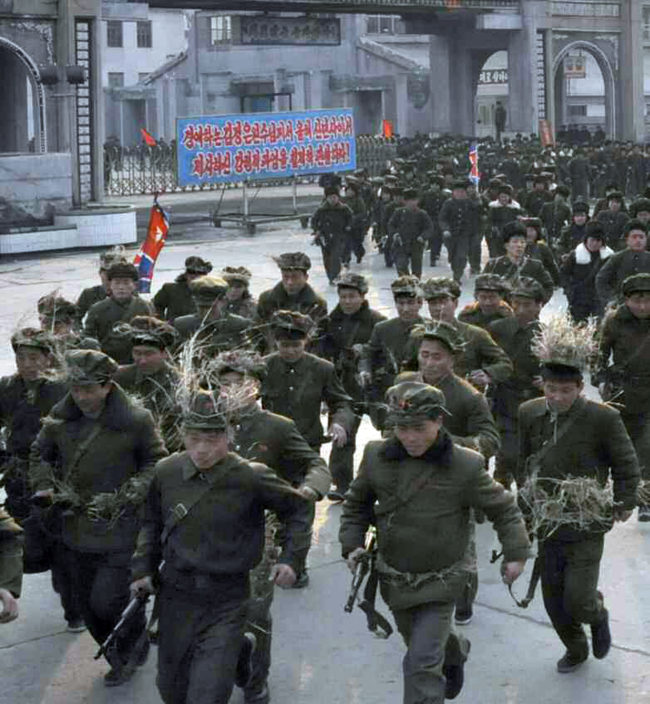Key Resolve drills get under way
N.K. blocks telephone hotline at Panmunjeom
By 윤민식Published : March 11, 2013 - 09:17
South Korea and the U.S. launched their annual Key Resolve drills on Monday as North Korea cut out a telephone hotline at the inter-Korean border village in its latest provocative act.
Pyongyang had earlier threatened to scrap the armistice agreement and inter-Korean agreements on nonaggression and denuclearization denouncing the 10-day allied exercise as a “rehearsal for a nuclear war of incursion.”
Pyongyang had earlier threatened to scrap the armistice agreement and inter-Korean agreements on nonaggression and denuclearization denouncing the 10-day allied exercise as a “rehearsal for a nuclear war of incursion.”

For the first time, Seoul’s Joint Chiefs of Staff led the command post exercise in preparation for the retaking of wartime operational control in 2015. The allies have also been conducting the two-month Foal Eagle field training exercise which runs until April 30.
“Exercise Key Resolve is a critical exercise in strengthening the readiness of combined Republic of Korea and U.S. forces,” said Gen. James D. Thurman, the commander of the Combined Forces Command in a press release.
“This year is particularly important because it is the first time the ROK JCS have planned and executed this combined exercise. In doing so, they are taking great strides to assume wartime operational control of forces in December 2015.”
Some 10,000 South Korean troops and 3,000 American troops including 2,500 participants from the Hawaii-based Pacific Command and other U.S. bases joined the drills.
Washington has mobilized its strategic weapons systems such as the F-22 stealth aircraft and a B-52 bomber, as well as high-tech naval assets such as the USS Lassen and USS Fitzgerald guided-missile destroyers.
Warning that they would switch the exercise to emergency mode upon any provocation, the allied forces closely watched movements by the North, which has set no-fly, no-sail zones in its western and eastern frontline areas.
A high-level official at Seoul’s Defense Ministry played down the possibility of North Korean provocations.
“(Current) signs are not that North Korea would take any concrete (provocative) action. A barking dog does not bite. It would stay calm at the timing of an attack, but would attack you out of the blue,” he said, declining to be named.
“The basics of a war provocation are a surprise attack. But the problem is whether (North Korean leader) Kim Jong-un is able to think rationally or whether he has grow up in a provocative environment.”
Experts believe the North could launch provocations by firing short-range missiles such as the KN-02 missile with a range of around 120 km and Scud-B/C missiles with ranges of 300-500 km. Seoul has also kept closer tabs on the possibility of surprise attacks near the inter-Korean sea and land borders.
The South Korean military has mobilized all of its intelligence, reconnaissance assets including Aegis radar systems, Peace Eye early warning and control aircraft, and Baekdu and Geumgang reconnaissance planes.
Earlier in the day, Seoul officials at the Red Cross office at the border village of Panmunjeom tried to contact its North Korean side by phone, but it did not pick up. The officials of the two countries call each other at 9 a.m. and 4 p.m. to notify each other of the start and end of their daily work.
The Red Cross communications channel was scrapped in May 2010 after Seoul cut all exchanges with Pyongyang through the so-called May 24 measures in response to the North’s sinking of the South Korean corvette Cheonan in March of the year. It was restored in January 2011.
Despite heightened tension, operations in the inter-Korean Gaeseong Industrial Complex proceeded as normal. Seoul’s Unification Ministry said that it was doing its best for the security of South Korean citizens in the complex, whose number stood at around 780.
“(The Seoul government) maintains its firm stance that it would not allow (the North) to launch additional provocations and own nuclear arms while it is closely watching North Korean movements,” the ministry’s written parliamentary briefing said.
Some recent North Korean movements have reinforced concerns over possible provocations.
North Korea’s General Staff chief Hyon Yong-chol on Saturday inspected Panmunjeom within the DMZ separating the two Koreas. Its leader Kim Jong-un has been seen visiting front-line military units five times since Feb. 20 when the Key Resolve plan was released to the public.
The Rodong Sinmun, the daily of the North’s ruling Workers’ Party, said in a piece that the armistice agreement had been made completely null and void as of March 11. Coastal artillery pieces in Hwanghae Province of the North near the Northern Limit Line, a de facto sea border, appeared to be on standby. Its multiple launch rockets were seen being forward-deployed.
By Song Sang-ho
(sshluck@heraldcorp.com)





![[Herald Interview] 'Amid aging population, Korea to invite more young professionals from overseas'](http://res.heraldm.com/phpwas/restmb_idxmake.php?idx=644&simg=/content/image/2024/04/24/20240424050844_0.jpg&u=20240424200058)











![[KH Explains] Korean shipbuilding stocks rally: Real growth or bubble?](http://res.heraldm.com/phpwas/restmb_idxmake.php?idx=652&simg=/content/image/2024/04/25/20240425050656_0.jpg&u=)

